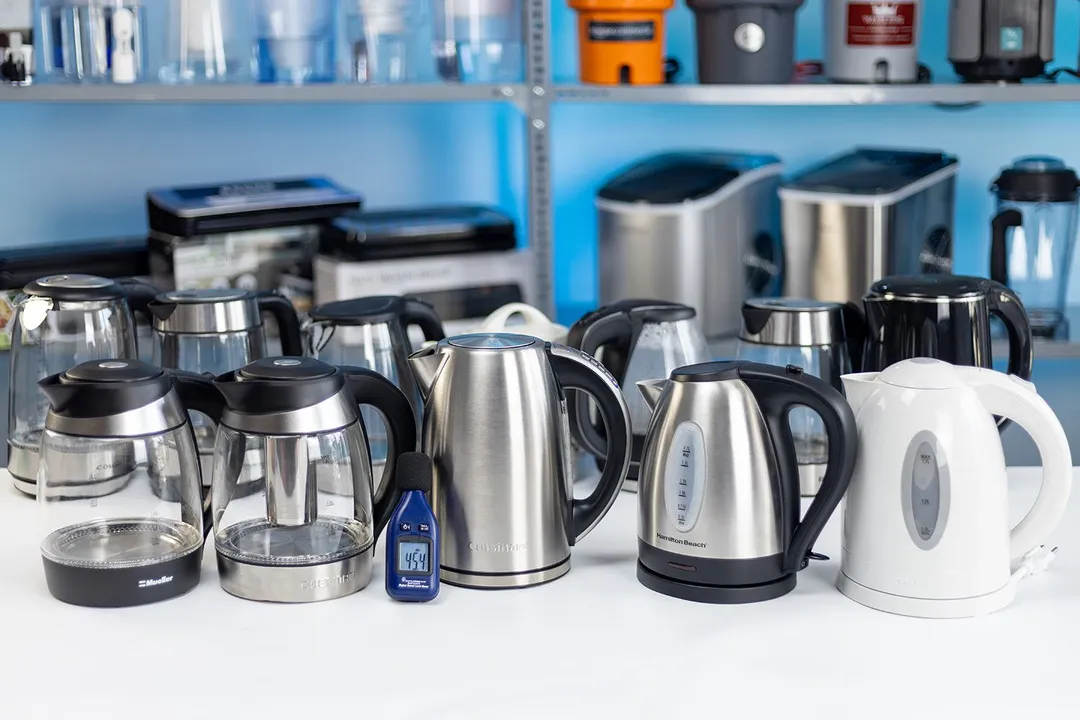Our recommendations are made independently through Research & Testing. We may receive commissions from purchases made via our links.
Energy Consumption Test for Electric Kettles
You will be surprised, just as were, to discover that shorter boiling times don't necessarily mean less energy consumption. A kettle's power output is also not directly correlated to performance. For more insights, see how we test electric kettles’ energy consumption.
This test is part of How We Test Electric Kettles v1.0
We have established in our How We Test article that two crucial aspects of electric kettles are if the product boils water to the correct temperature and how fast it does it. Then, the next important factor is how much energy the kettle consumes by boiling water. Many people tend to gloss over energy consumption but you shouldn’t because it dictates your electricity bill.
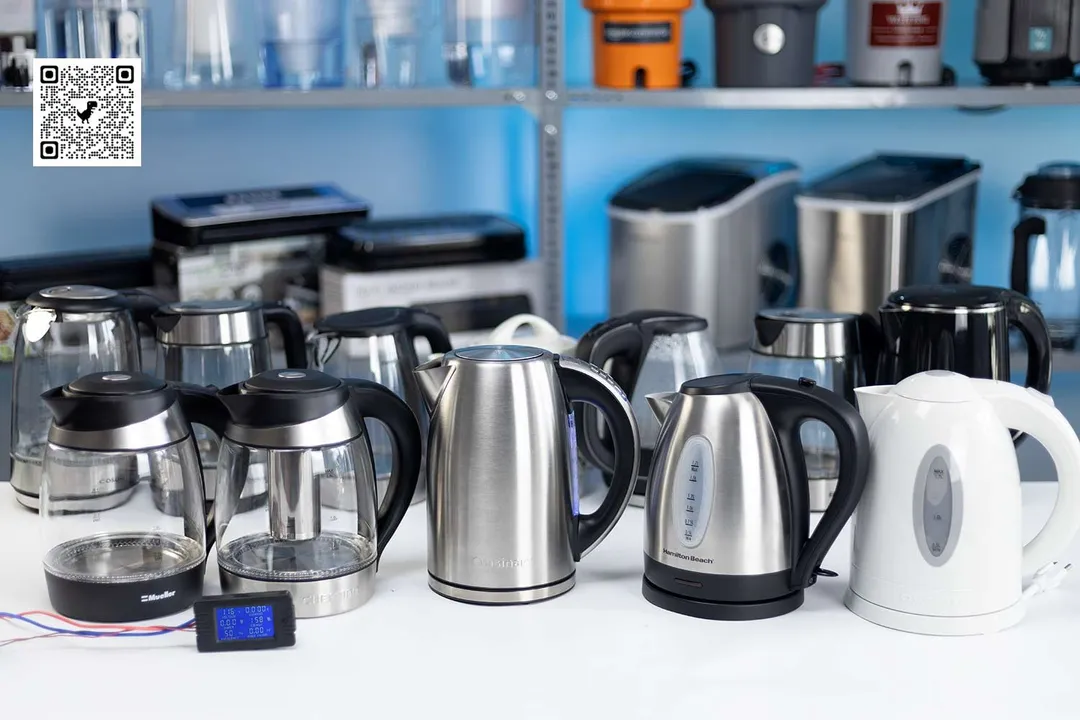
The two most important factors in electric kettle testing are temperature followed by boiling speed. The third factor, and one often overlooked, is energy consumption. How much energy a kettle uses is a measure of its efficiency and also your electricity bill!
We were surprised to discover that shorter boiling times don’t necessarily translate into lower energy consumption. The same goes for power output which doesn’t always correlate to performance.
There are a lot of interesting variables in calculating energy consumption. Also, how long your kettle continuously boils for before automatically switching off is another factor not to be missed.
Having gained such valuable insights from our preliminary tests, we assigned the Energy Consumption test 30% of the total performance score.
This test is performed simultaneously with our Boiling Time test which uses 1.5 liters of room-temperature tap water at a starting temperature of 80°F (26.7°C). To calculate energy consumption, we’ll need a power meter.
Power Meter Setup
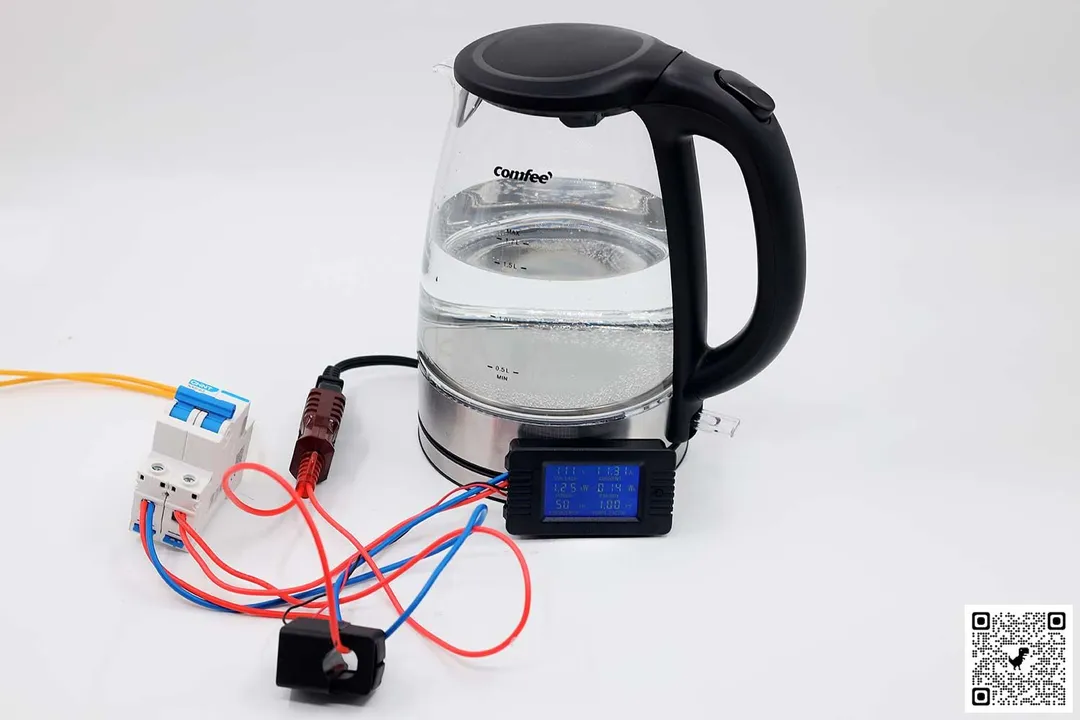
Our power meter setup uses a 110 V / 60 Hz AC outlet with a circuit breaker. It is directly connected to the power meter to minimize electrical resistance. During preliminary testing, we noticed how adding an extension cord increased the voltage due to the increased resistance (more components = more resistance).
We then connect the power meter to a plug adapter using a one-meter electrical wire. The long wire allows us to move our setup more freely and the adapter is for connecting to the test subject—an electric kettle in this case (stay tuned for more product testing!).
Electrical Parameters

All of our test subject kettles have a maximum voltage of 120 V. Since we use the same customized outlet everytime, the only added variable in terms of resistance is from the kettle.
The resistance each kettle provides is different and depending on that, the actual voltage can range from 113 to 114 and 115 V. As a result, the current is different through every kettle: V = I x R.
- V = voltage (volt)
- I = current (amp)
- R = resistance (Ohm)
The difference in the maximum and the actual voltage is around 10‒20%, so we can expect around a 10–20% decrease in actual wattage as well: P = I x V x PF
- P = power (watt)
- V = voltage (volt)
- I = current (amp)
- PF = power factor (kW)
And, if you take a look at our example photo of a 1500 W kettle, it shows just that in the power meter. You can also see that the power factor is 1—this was the same throughout all of our kettles.
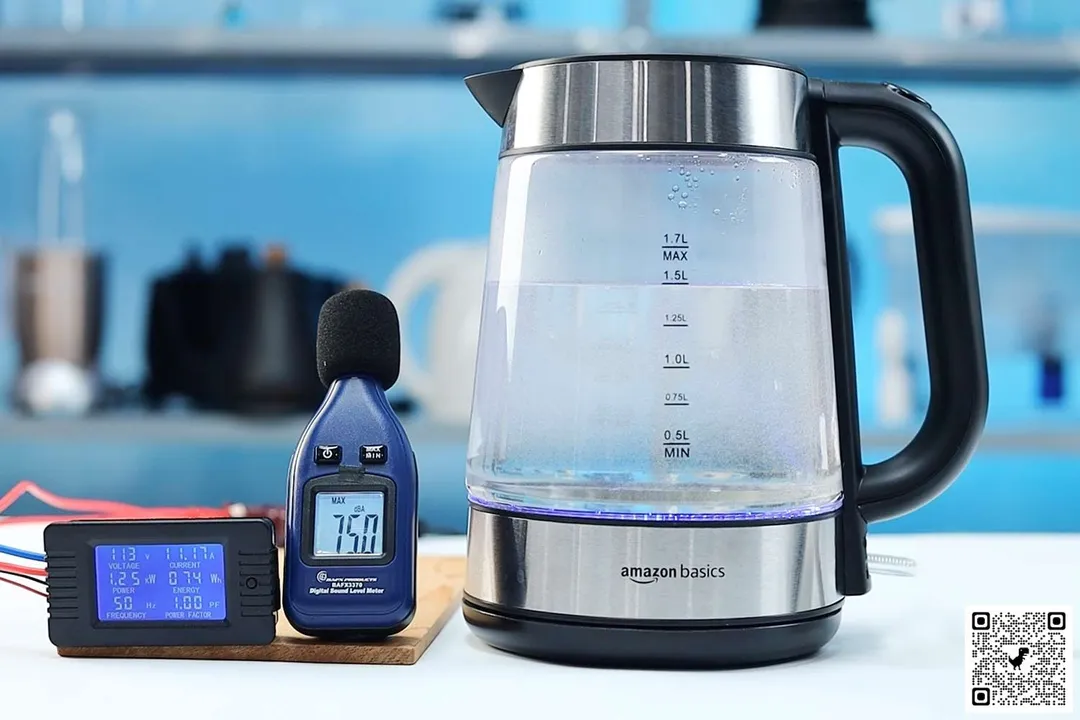
Consequently, when we have the boiling time and the actual wattage, we can calculate the energy consumption: Watt Hours = number of watts x number of hours.
Of course, we have the power meter to do that for us.
Steps
1. Fill the kettle with 1.5 liters of room-temperature tap water and plug in (we use our customized outlet).
2. Turn on the kettle and check that the indicator light is on.
3. Monitor the voltage, current, power, and watt hours using the power meter.
4. Once the kettle boils and automatically turns off, check the final watt hours on the power meter.
5. Record the kettle’s voltage, current, power, and most importantly, watt hours using the power meter for data collection.
Scoring
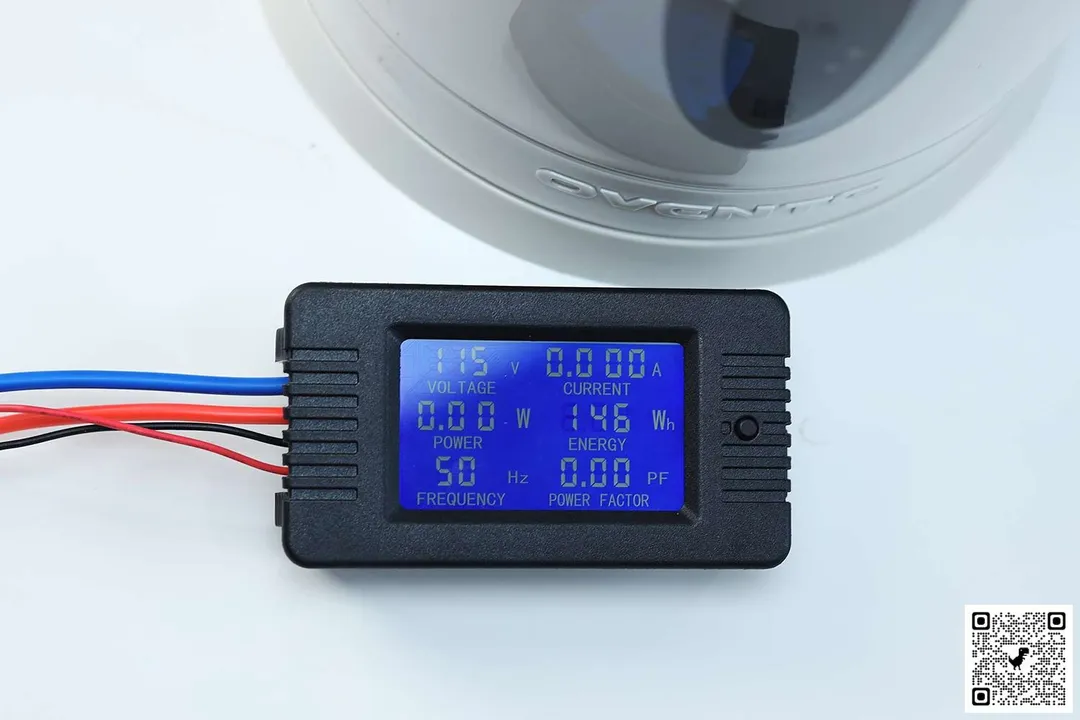
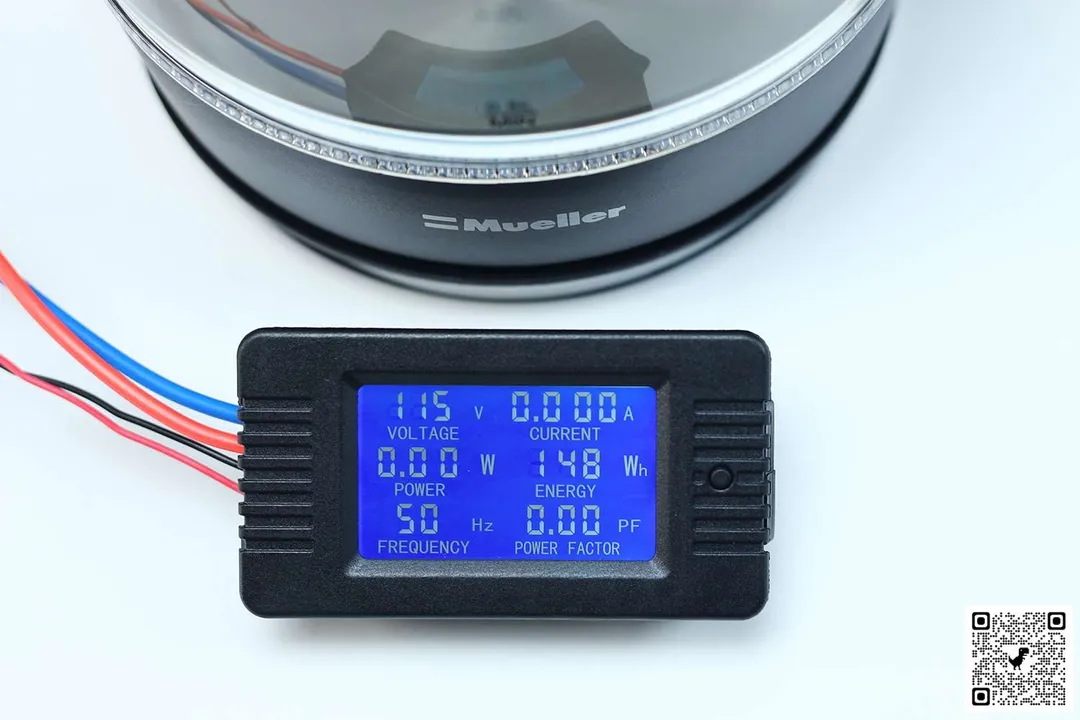
Water heat capacity is 4.2 kJ/kg°C, meaning that it takes 4.2 kJ (kilo-Joules) of energy to raise the temperature of a kilogram of water by 1°C.
If the water temperature is 26.7°C (80°F), to boil 1.5 liters of water, one needs:
E = 4.2 * 1.5 * (100 – 26.7) = 461.8 kJ = 128.27778 Wh
However, the energy efficiency of electrical appliances is commonly around 90%. As a result, we can expect the actual result to be around 141.105558 Wh. Therefore, we use 140 Wh as our benchmark for a 10/10 score for our Energy Consumption test.
Our data collection showed that, on average, kettles consume around 150 Wh to 160 Wh. As such, we decided to deduct one point for each 5 Wh increase in energy consumption.
Compared to our 10/10 score, 165 Wh equals a 35% increase in energy consumption, which we think is a reasonable limit. Thus, we concluded that anything above that would receive a 0/10 score.
10 | 9 | 8 | 7 | 6 | 5 | 0 |
|---|---|---|---|---|---|---|
140 Wh | 145 Wh | 150 Wh | 155 Wh | 160 Wh | 165 Wh | > 165 Wh |
Test Developers
Alan Nguyen is a writer and product reviewer at HealthyKitchen101. His major in English language teaching taught him to present concise information. In addition to his cooking hobby, he values the practical aspects of household appliances.
Lap is Head of the Research, Testing, and Review Team (RTR Team) at HealthyKitchen101.com, where he directs and supervises the testing of kitchen gadgets and appliances.
Nguyen Ntk is a graphic designer, photographer, and videographer whose philosophy centers around respecting and celebrating the beauty of reality. Through his lenses, Nguyen strives to capture the true essence of objects and events, showcasing and highlighting authentic features without distortion or exaggeration.



